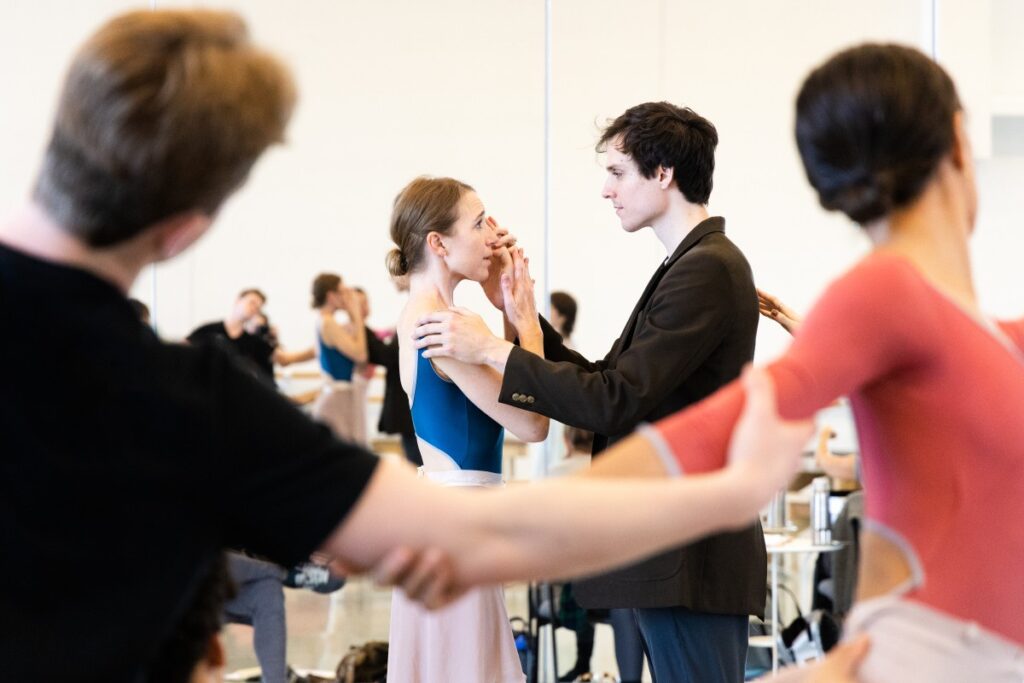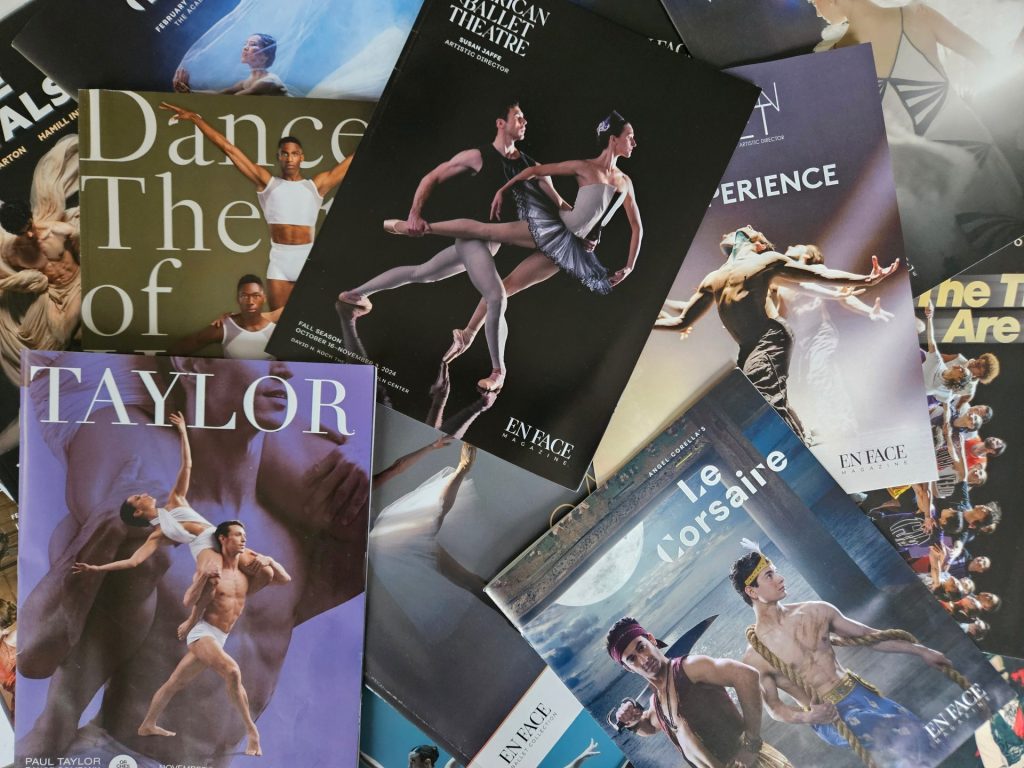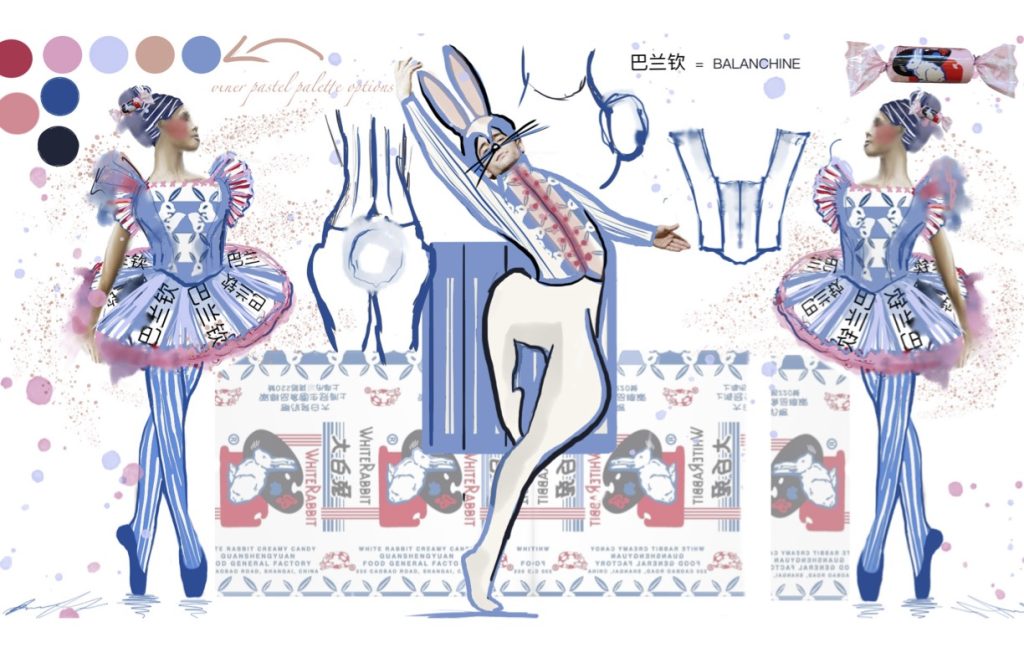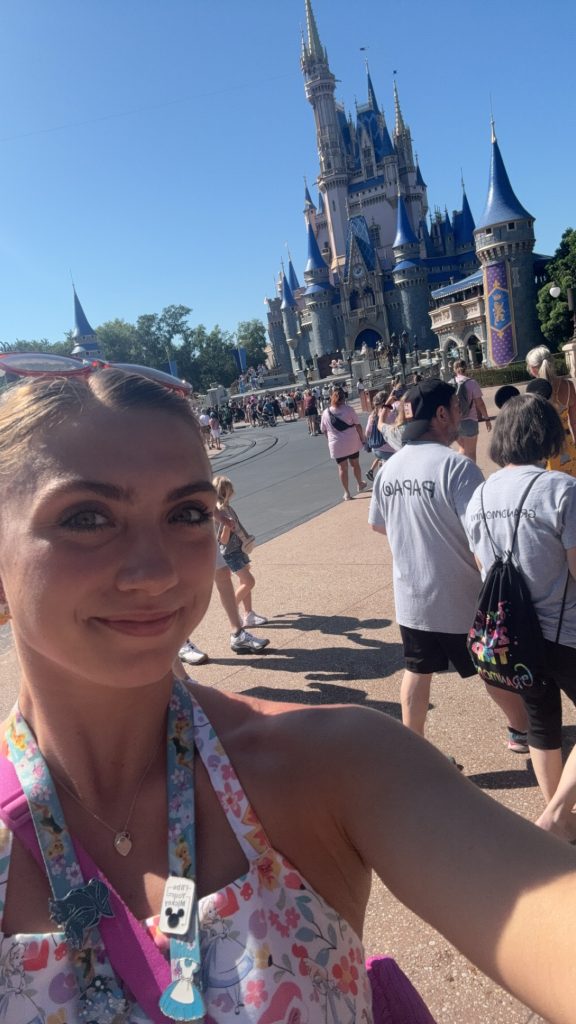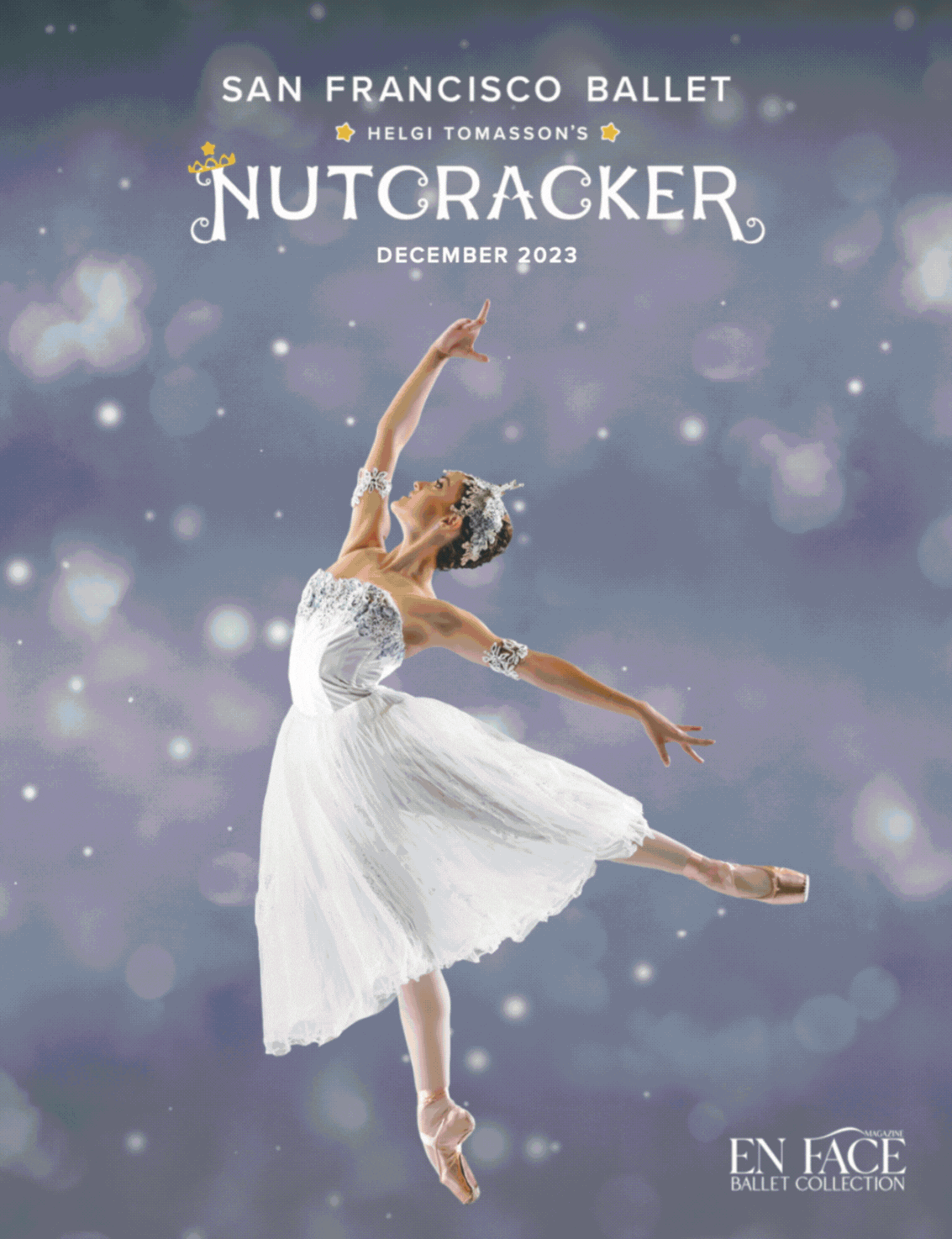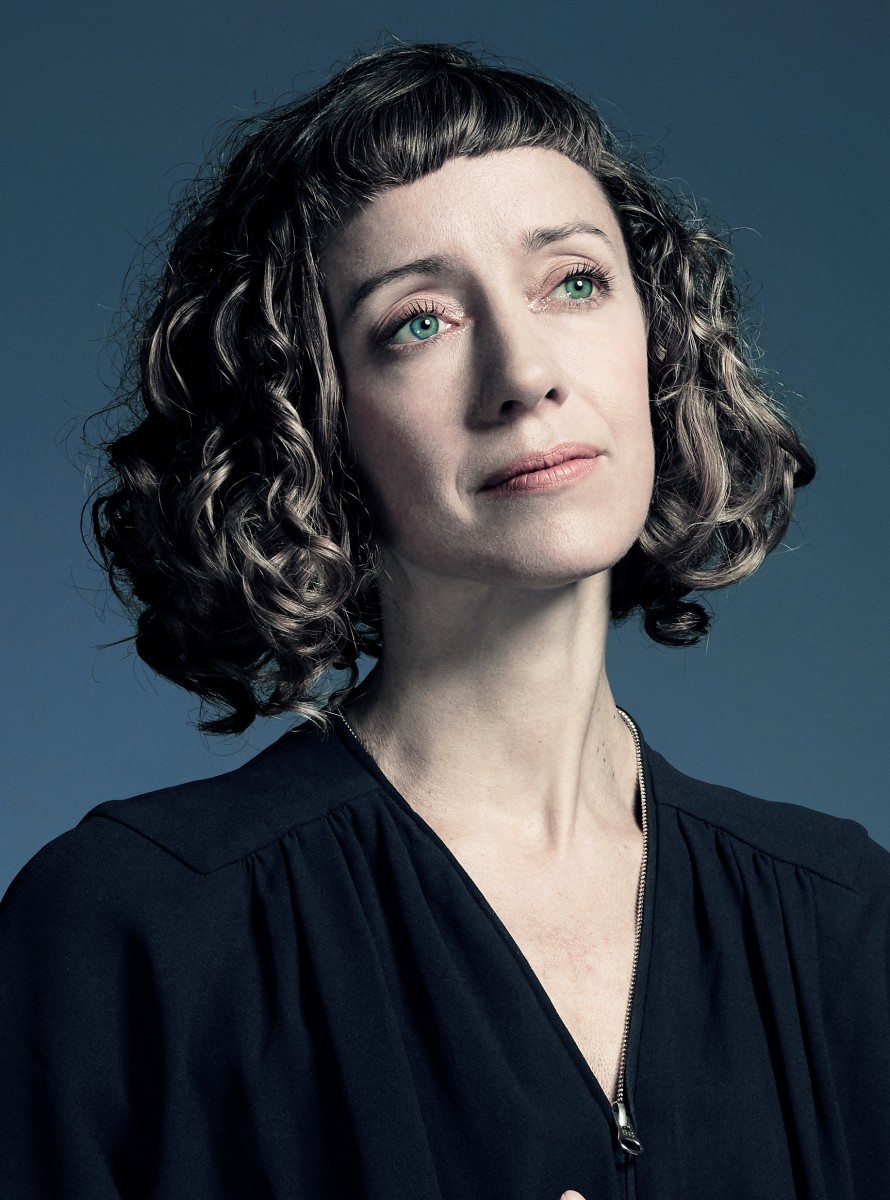
“Now we come to the main exterior set, which is a promontory in a park or public square in the town of Glorious Hill.
Situated on this promontory is a fountain in the form of a stone angel, in a gracefully crouching position with wings lifted and her hands held together to form a cup from which water flows, a public drinking fountain.
The stone angel of the fountain should probably be elevated so that it appears in the interior scenes as a symbolic figure (Eternity) brooding over the course of the play.”
– Summer and Smoke, Tennessee Williams
Cathy Marston is an award-winning choreographer and artistic director building on a successful international dance career now spanning over twenty-five years. She will become Director of Ballett Zürich, Switzerland, starting in August 2023. Much of her choreographic artistry has been inspired by the many books she has read, be it Steinbeck’s Of Mice and Men or Charlotte Brontë’s Jane Eyre.
Her newest highly anticipated choreographic endeavor is an intimate and insightful adaptation of Tenessee Williams’ southern gothic play, Summer and Smoke. A co-production of Houston Ballet and American Ballet Theatre, this is a simple love story of a somewhat puritanical Southern girl and a liberal-thinking young doctor. Despite their deep-seated differences, a strong attraction continues to draw them together, that is until they both begin to change as people.
We were honored enough to be able to sit down with Cathy Marston to discuss her uniquely literary approach to ballet and the delightful nuances of storytelling that she will be bringing to the Houston Ballet stage with Summer and Smoke.
Literature is a theme that’s woven through many of your works, from A Tale of Two Cities to Jane Eyre, and now Summer and Smoke. What is it that draws you to a book to transform it into choreography?
Books have been a big part of my life forever. My parents were both English teachers. And while everybody learns to read, I think I was perhaps brought up with a love for books because of my mom and dad. They also took me to the theater quite often to see plays, musicals, and things like that. Stories were a big part of my childhood. And now it just doesn’t make sense to me to create without one.
For a good decade or more I didn’t want to be put in a box as a choreographer and just known for one thing, so I was trying to do abstract work, I wanted to try all the different things. Which was great for a period of time, and I think it’s the right thing. You have to find your way. But I think it was at the end of my tenure at directing Bern Ballet, which was a really wonderful six years where I had a small company of 14 and I could make different things and kind of had to make different sorts of pieces to satisfy the program. I realized that the pieces that really made my heart sing were the storytelling ones. At that point I felt, I’m old enough to be put in that box now. I’m happy with that area, and I want to specialize more than generalize in that.
Recently I made a piece for Joffrey Ballet. It was a musically driven piece they asked me to create to Wagner’s Siegfried Idyll, when it was a special collaboration with the Chicago Symphony Orchestra. It was unusual because the starting point was not a story, it was a piece of music that had some history to it, but didn’t really have a narrative behind it. So I thought, okay, I’m gonna try this [abstract thing] again. Let’s see how it goes. And, well, I just can’t help it… it developed into a little story. Because that’s just the way my mind works. I think it’s my way of connecting. I like talking to people and being in dialogue with people, and I think that’s how human beings connect – we tell each other our stories. My way is through dance.
That’s absolutely beautiful. And on that note of being able to connect with people, turning well-known narratives and stories into ballets can be a very accessible entry point for people who might not be ballet lovers yet. Do you feel that transforming books into ballets really helps open up that accessibility?
There’s all sorts of people, so everyone’s gonna have their cup of tea, but I do get feedback for people who don’t necessarily understand the details of the ballet technique or the history of the music. There’s some people, for whom [ballet] is like a fine wine. They’re looking at the turnout, the instep, or the musicality, and that’s gonna turn some people on.
Others won’t know those things so much, but they will be moved by the emotion and the story. I’m really keen to bring those people into the dance world and at the same time not simplify it.
Accessible is a really funny word, isn’t it? I want it to be accessible, but I also want it to have depth and I want to make pieces that people enter into on a first or only viewing, but also a piece that people will be rewarded through repeated viewings. I really like to create things that, if you’re sitting there watching it for the fourth time, you would still see something that you haven’t seen before going on over there.
Every dancer on stage has their own little story going on, and though they might not be the one in the follow spot, it’s important to the richness of what’s on the stage.
I love your emphasis on creating those layers of complexity in your work. Someone could watch ballet for the first time and love it, or someone could see this performance the eighth time and still love it and find new things.
Now when talking about the pairing of stories with music, how do you select scores you want to pair with these stories?
There are all sorts of factors that come into play. A big one is money, because I do like working with composers. But obviously that’s a significant cost. It’s a big deal to commission a new score for ballet. And sometimes it’s possible and sometimes it’s not.
I feel very privileged with Houston Ballet and Summer and Smoke that we’ve been able to make it happen. I’m really a fan of working with a composer or an arranger so that you can create the dramaturgy and the structure of the piece independently of what you might be able to find on a CD recording or on a score. That’s important to me. And then if sometimes I am able to commission new music and it feels like the right thing to do for the piece, which it did in the case of Summer and Smoke, that’s really exciting. That collaboration can go in all sorts of different ways. [Right now] I’ve got four new scores on the go and they’re all so different.
For Summer and Smoke, composer Michael Daugherty and I really worked thematically. Choreographically for myself, but compositionally for him, we both like to create character motifs or themes, little melodies that reoccur.
We had weekly meetings. He’d make a new scene and then we’d say, well, logically, this next scene should refer back to that moment in the story or transform that motif, but now add this because this is happening. It’s very, very collaborative.
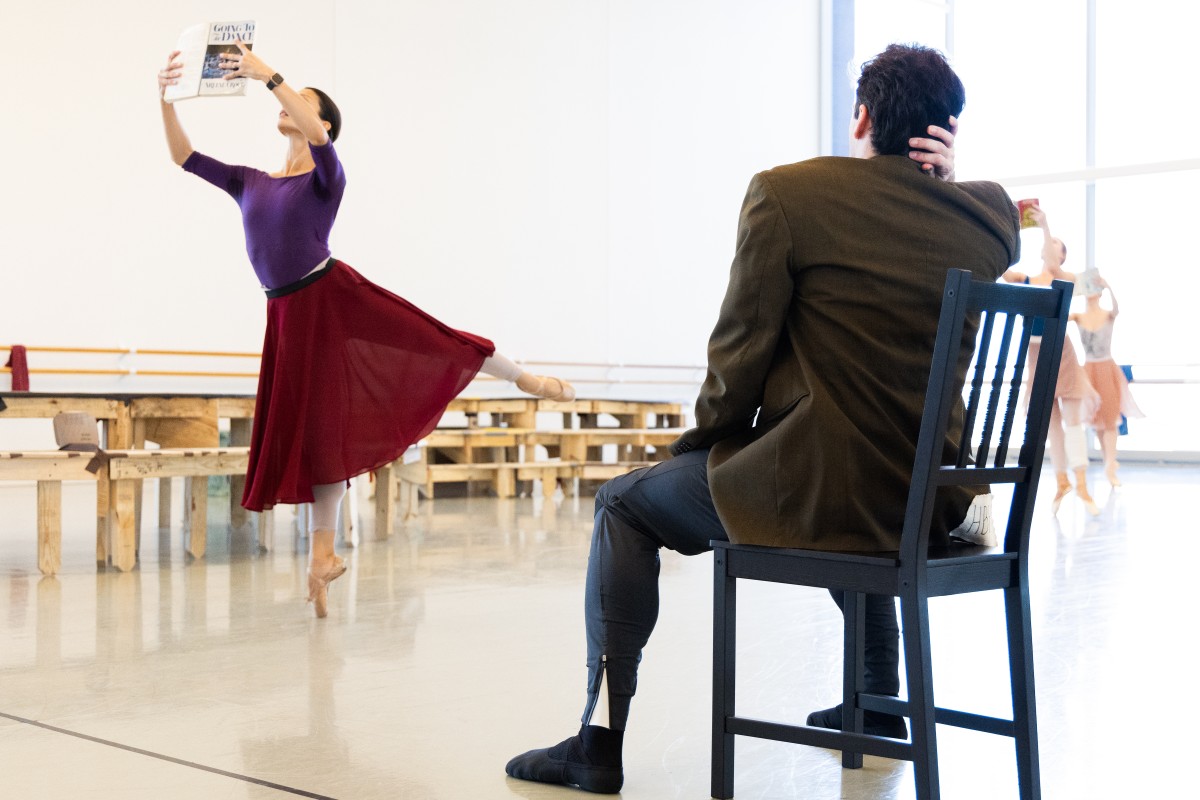
Houston Ballet Principals Karina Gonzálezand Chase O’Connell rehearsing Cathy Marston’s Summerand Smoke. Photo by Lawrence Elizabeth Knox (2022), Courtesy of Houston Ballet.
That’s the first thing that I do when I start the creative choreographic process – I work with the dancers on movement phrases for their character so that they have a vocabulary. That will be from a way of walking and standing, or to put it really simplistically, a happy phrase or a sad phrase, or a jealous phrase or angry phrase.
Fantastic. Can you tell us then a little bit about those characters right now for Summer and Smoke, particularly Alma. I was reading through Summer and Smoke last night, and she is a very distinct person with particular movement notes given to her. How are you capturing that?
You’re right, she has several stage directions in the piece. Off the top of my head, Tennessee Williams talks about her cupping her hands slightly, as if she’s in communion, and she’s got this sort of fluttery heart thing, and a nervous laugh… you feel breathless somehow. All of those will find their way into the word lists and we’ll interpret them in movement and little motifs. There’s one where her heart keeps jumping out of her chest.
I’ll try them out with different body parts, and a go-to that is a bit of a signature for me, is if I can say something with a leg that would normally be said with an arm.
Another thing that Tennessee Williams really focuses on is setting, and particularly in this story, that of the fountain and the angel, it seems that you are taking a somewhat interesting approach to that. Can you tell us a little bit about how you’re interpreting that?
So obviously you read the play. There’s an angel that’s kind of omnipresent, and one of the major locations is this town square where there’s a fountain with an angel statue and the water coming out of her hands. [Tenesee Williams] gives the direction that the angel should always be on stage somehow, even if they’re in someone’s house or in the rectory or whatever, the angel is always present.
Then [my next thought was], why have a static body when we’ve got a stage full of moving bodies? I often like to find a specific point of view or a way into to my stories, and sometimes that’s the main character. I just like to know who’s the storyteller or from which angle are we coming into the story.
And [in the case of Summer and Smoke] it seemed to me that it was the angel. It was a really wonderful way to get into Alma and John’s story, because they’re kind of equal. I mean, I probably do slightly favor Alma, but I’m not sure if that’s just personal or if it come out in the work.
There are these two sides to the story and they swap while the angel sits in the middle. So I felt like that was a kind of neutral and yet not neutral. [The angel] is an unreliable witness. She might have feelings about the story, but she is watching it from between them both.
I was very inspired by a film called Wings of Desire by Wim Wenders. It’s set in Berlin and there are all these angels that live above the streets of Berlin. They wear these trench coats and hats, so they’re not angelic looking at all, but they look down on humans and they listen and they fly down and listen to the thoughts and the conversations. One particular angel starts to have feelings for a human being, and they can choose to fall, but then they bleed and life becomes real. Anyway, it was only a little nugget of the film that sort of then connected to the angel. Then in Summer and Smoke I became interested in what would the angel feel.
Alma goes past this angel every day. The angel listens to her thinking about her problems in life, and what does the angel think about it? What does she want for Alma and John?
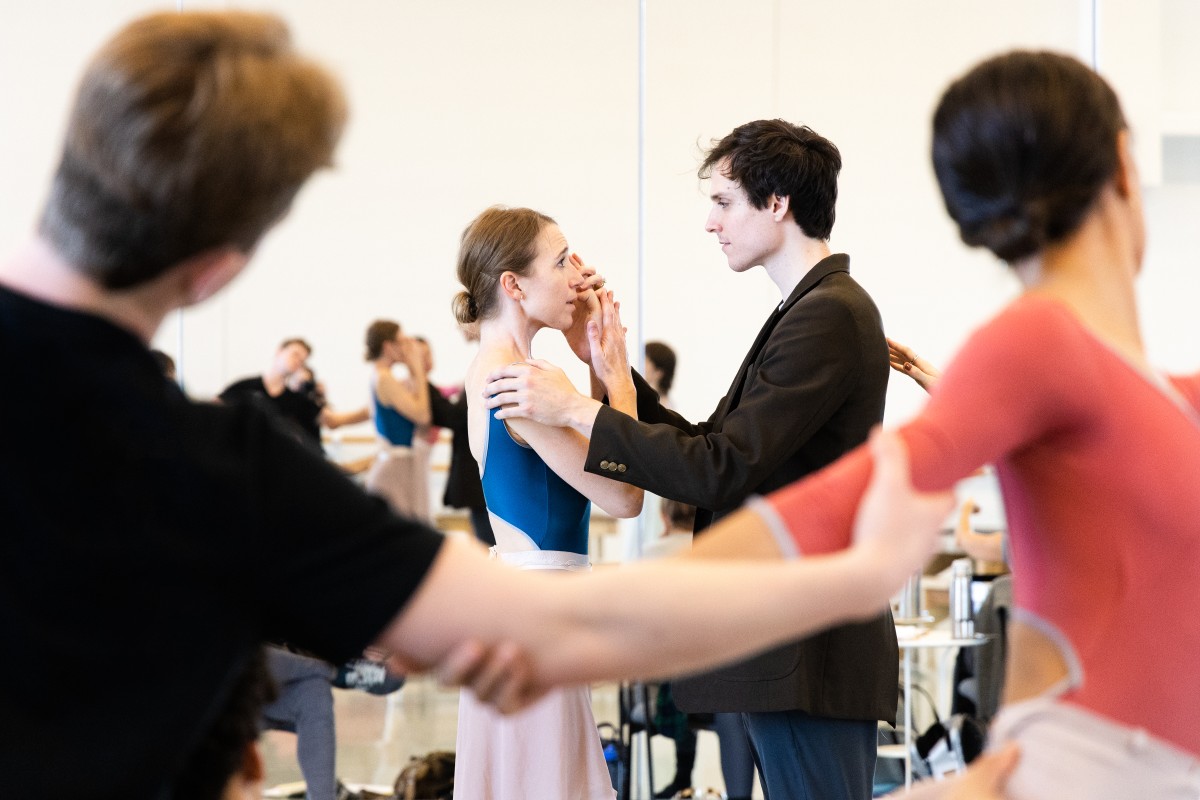
Houston Ballet Principals Jessica Collado and Chase O’Connell with Artists of Houston Ballet rehearsing Cathy Marston’s Summer and Smoke. Photo by Lawrence Elizabeth Knox (2022), Courtesy of Houston Ballet.
That’s fantastic. You often focus on British literature many times historically, and it seems that you’ve been pulling more on American sources recently. What about Tennessee Williams has interested you in particular, and what is it about the story of John and Alma that you find so intriguing?
I’m interested when I go to different companies, what literature it might give me a chance to explore. So when I first came and got the opportunity to create for San Francisco Ballet, I started reading a lot of short stories, American short stories and plays, and in that case I chose to go with Ethan Frome, by Edith Warton. But even at that point, I started reading some of Tennessee Williams and it was sort of going on in my head. And Summer and Smoke was there. It’s funny – it’s a piece that he wrote three times in different ways. He wrote it as a short story, and then as Summer and Smoke, and then it became, um, God, the title’s gone outta my head…. there’s something about a Nightingale…. (We looked it up later, it’s The Eccentricities of a Nightingale.) Anyway, he sort of kept going back. These characters and the plot, Summer and Smoke itself, do receive a bit of criticism as a play because it’s almost too formulaic, or at least some critics feel that way.
Alma represents the spirit, John represents the body, and then they swap. In a way it’s very simple, although it’s got a narrative through it. But that simplicity was actually quite helpful for me in creating a ballet because you’ve got very clear opposition to play with in movement quality, and that simple, almost coming together but not quite, was just a lovely shape and it gave tension, in a good way, for the choreography.
We are in this moment where we as people are becoming ever more polarized. You either are for this or you are for that. I don’t even think I need to give examples, but it’s very frustrating in life, with the pandemic and all of that. You’re a vaccinated person, or you’re not, or you wear a mask, or you don’t, or you believe in this political party or in that one… people really are putting themselves in silos, and I find that that’s a shame. There’s much more of interest to me in a grey area and in understanding people’s different points of view.
It’s ever inspiring and interesting, and the reason for living… isn’t it to put yourself in someone else’s shoes and imagine what it is? So I think [Summer and Smoke] is a tale that somehow delves into that issue. And in the end, I give the last story to Alma. She does get more development in the piece, and she goes from her position through John’s position to actually a position where she manages to find an integration of both the spirit and body in herself.
Someone asked me recently, did I feel like Alma was a victim? Not at all. I think she’s empowered by the end. I don’t know how much I’ve projected that onto her, and how much of it it was Tennessee Williams’ intention. But I don’t see her as a victim.
That is an amazing story arc. I can’t wait to see it all come to life on the stage. In that process, uh, you are working, uh, cause it is a co-production with Houston as well as American Ballet Theatre. How has it been creating a work in this joint environment for two different groups? It sounds like there must be so much additional creativity and collaboration.
There are so many different ways to do a co-production. And in this case it has all been created in Houston. The nice thing of course is that because I worked with ABT on Jane Eyre, I have many of the dancers also in the back of my mind. So I’ve already cast it mentally with them.
But in terms of the actual studio process, it’s been with the dancers of [Houston Ballet]. I’ve been very lucky with the assistance I’ve had in Houston. One dancer, Sarah Van Patton, who I’ve worked with a couple times in San Francisco Ballet. And she’s amazing. As an actress and dancer she retired this year, and so she’s been working for me as a stager a little bit and she’s been assisting in Houston and doing really wonderful work. So it’s a team effort, like a big piece like that doesn’t just come out of me since a ton of people are putting themselves in.
Makes perfect sense. Is there anything else you would like our readers to know about Summer and Smoke and this production in general?
The design. The design is something that I try to do a lot to strip back the illustrative elements of a visual setting. So there are two levels. I, I think probably reading the piece you felt, there’s, there’s often simultaneous scenes going on.
John’s living next door to Alma, you kind of see both locations and that was really challenging to do in dance. And so we, we’ve done that by creating a second level, which just in the technical manifestation of it, it’s taken a while to get there. But it’s very abstractly done.
There’s a sort of sweeping movement, a serpent-like platform shape that actually was inspired by the Mississippi, like looking down at the river curling through the countryside. I feel like that has really found its way into the movement. So there’s a lot of sweeping circular scene changes in movement, especially with the angels and her.
The angel has six “wings.” As in, she’s got three people on each side of her being her wings. So often they kind of change the set and, and move the scene, moving the story on. But the set itself is very beautiful and evocative without being illustrative, which is something I try to do.
And the same with the costumes that we are obviously placing it in the period, sort of early 20th century, pre-first World war. , but without being too pedantic about it. So the movement, the materials, the fabrics, the shapes of the dresses, will have influences from the period but without swamping the body.
Patrick Kin did the design. Edward Kemp is the dramaturg that I work with almost always. And it’s over 20 years that we’ve been working together with more than 20 pieces.
And Michael Daugherty has of course been brilliant as a composer. So the team’s really, really wonderful. I’m very grateful that the Houston Ballet and ABT let me have them. It is going to be such a beautiful production.
So excited to see it all come together, this lovely vision. Thanks. Just one last question, just a general one. You are going to Zurich Ballet, you know, relatively soon, are you, what are you most looking forward to in that new adventure?
Oof. What am I most looking forward to? I’m so excited about day one to get the dancers that I’ve really been sort of, finding from all over the world. I’m really excited to have that group of people in one room to create with.
And to have a public and create that dialogue. As we said at the beginning, I really enjoy the dialogue of making pieces that people can understand. It’s almost like creating a thesis about a literary work somehow. You know, academics don’t just write their own thing, they’re always referring to other people, and that sort of inter-referential thing is something that I feel I can contribute to in my language, which is wonderful.
It really is. Well, thank you so much for talking with us today. Your work is truly inspiring and your approach to both literature and just the way that you tell all story through movement is really lovely to see, and we can’t wait to see it all come together in Summer and Smoke.
Experience Cathy Marston’s Summer and Smoke for yourself at Houston Ballet, March 9-19.

